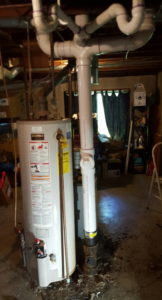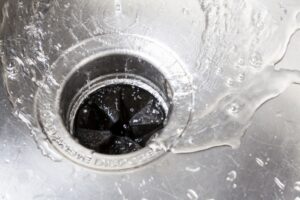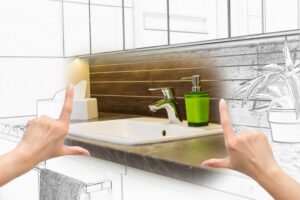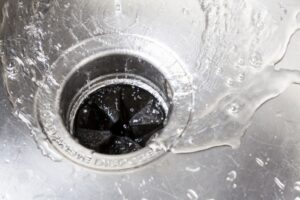All right, well maybe we can’t help you plan the perfect bathroom remodel, since everybody’s idea of “perfect” is different.What we can do, however, is help you plan a bathroom remodel that leaves you with efficient plumbing and functional space. We understand that customers want a bathroom that not only works well but also reflects their personal style and needs, and we focus on updating your bathroom to reflect current trends and standards. And we think that is pretty perfect! Homeowners can expect a free consultation to discuss their bathroom remodeling needs, ensuring the process starts off on the right foot.
The first step in planning a great bathroom remodel, of course, is contacting a professional plumbing contractor, such as us! The process starts with a clear understanding of the customer’s needs and goals, ensuring we deliver a remodel tailored to you. Our goal is to create a bathroom that reflects your vision and meets your functional needs. You can try to tackle a bathroom remodel all on your own, but this could lead to damage or even an ineffective installation due to improper measurements. Our qualified professionals are standing by and ready to help with every step, offering tips to ensure remodeling success. Bathroom remodelers are also responsible for hiring and supervising subcontractors during a remodel, ensuring every aspect of the project is handled professionally.
Read on as we uncover some of the most important factors to consider with your bathroom remodel, including the importance of current design trends and building codes, which will help it be a little bit closer to that perfection you’re seeking.
For more information on bathroom remodel costs or our services, please visit our dedicated page.
Continue Reading
Tags: Bathroom Remodeling, Plumbing, St. Charles
Posted in Plumbing | Comments Off on How to Plan the Perfect Bathroom Remodel
 One of the most potentially frustrating plumbing issues you might face in your home is in regards to a toilet that won’t stop running. Not only is it annoying to keep listening to, but it can also cost you significantly in excess water that you aren’t using–something that will quickly reflect on your monthly water bill.
One of the most potentially frustrating plumbing issues you might face in your home is in regards to a toilet that won’t stop running. Not only is it annoying to keep listening to, but it can also cost you significantly in excess water that you aren’t using–something that will quickly reflect on your monthly water bill.
 Homes are complex, with many components, systems, and appliances required to make them run as efficiently and effectively as possible. Your home’s plumbing stack is one of these systems.
Homes are complex, with many components, systems, and appliances required to make them run as efficiently and effectively as possible. Your home’s plumbing stack is one of these systems. Chances are, you probably don’t think about the drains and the pipes that run through your home all that often. That’s okay, we wouldn’t really expect you to.
Chances are, you probably don’t think about the drains and the pipes that run through your home all that often. That’s okay, we wouldn’t really expect you to.
 It may seem like common sense how to use your plumbing. You turn a tap on when you need water, and turn it off when you want the water to stop. Right?
It may seem like common sense how to use your plumbing. You turn a tap on when you need water, and turn it off when you want the water to stop. Right? One of the most frustrating issues you can face in your home, particularly with your bathroom plumbing, is a toilet that doesn’t stop running, no matter how long you wait. Not only is this annoying to listen to, but it will cost you in wasted water, and therefore wasted money.
One of the most frustrating issues you can face in your home, particularly with your bathroom plumbing, is a toilet that doesn’t stop running, no matter how long you wait. Not only is this annoying to listen to, but it will cost you in wasted water, and therefore wasted money. We recently wrote about
We recently wrote about  When you imagine all the things that might go wrong with a plumbing system, hard water is probably not one o your concerns, right? After all, things like a clogged toilet, a leaky faucet, or a burst pipe—those things are emergencies… “hard water” doesn’t even make a “top 10” list of worst plumbing problems to have.
When you imagine all the things that might go wrong with a plumbing system, hard water is probably not one o your concerns, right? After all, things like a clogged toilet, a leaky faucet, or a burst pipe—those things are emergencies… “hard water” doesn’t even make a “top 10” list of worst plumbing problems to have. When homeowners are on the search for the best ways to care for their homes, they typically are on the lookout for DIY tips. This makes sense–oftentimes DIY solutions to just about any home improvement or home care project are going to be more affordable. But when you’re looking at “what’s most affordable” are you just considering the upfront costs, or are you considering the long-term costs?
When homeowners are on the search for the best ways to care for their homes, they typically are on the lookout for DIY tips. This makes sense–oftentimes DIY solutions to just about any home improvement or home care project are going to be more affordable. But when you’re looking at “what’s most affordable” are you just considering the upfront costs, or are you considering the long-term costs? Planning a kitchen remodel–that is, planning a kitchen remodel that will be successful, starts with hiring the right contractors. While a general contractor has basic knowledge of what’s needed for your kitchen remodel, it can be a crapshoot about the sort of subcontractors they choose, and therefore you may end up with electrical and plumbing problems when the job is done.
Planning a kitchen remodel–that is, planning a kitchen remodel that will be successful, starts with hiring the right contractors. While a general contractor has basic knowledge of what’s needed for your kitchen remodel, it can be a crapshoot about the sort of subcontractors they choose, and therefore you may end up with electrical and plumbing problems when the job is done.